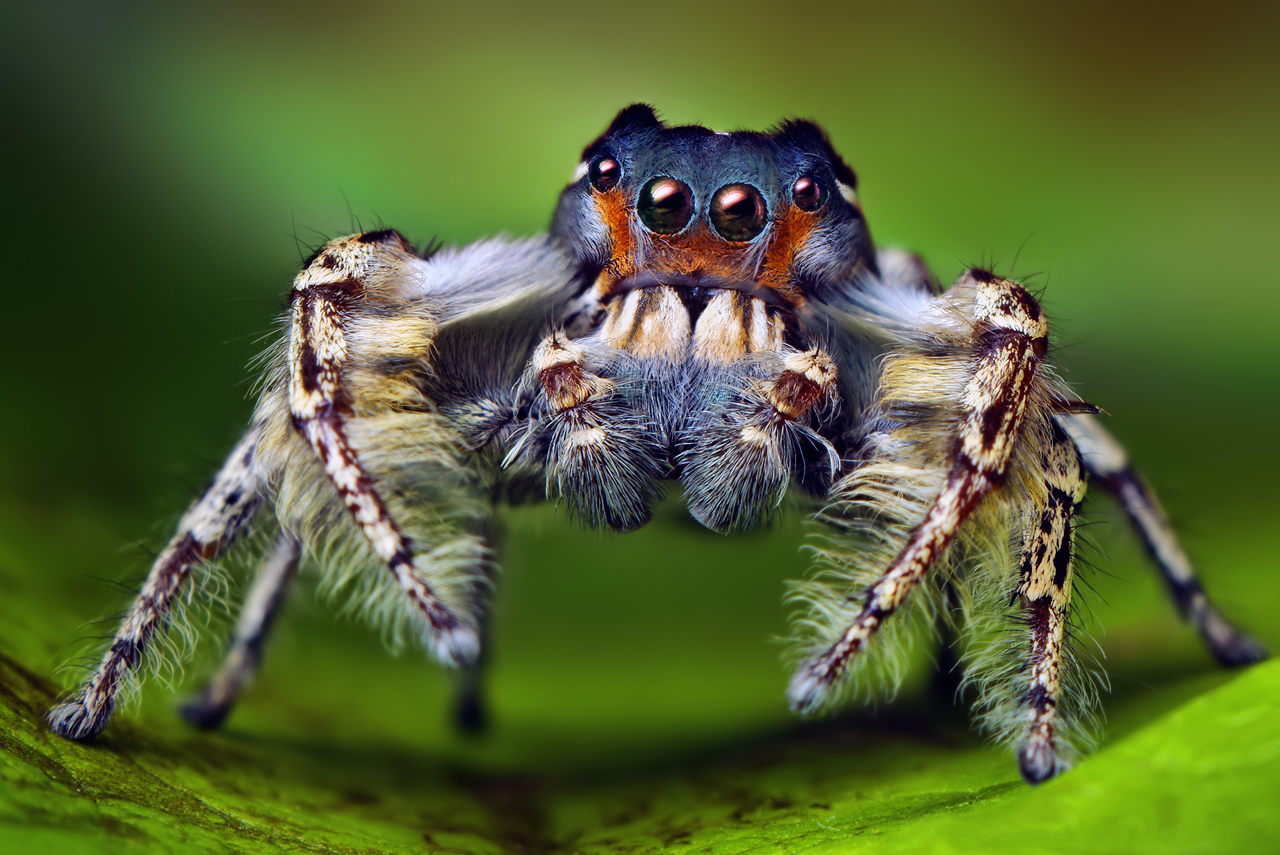While a spider stalking across your ceiling may draw the eye, its colorfulness is not usually the reason. But the distinctive colors are one of the defining characteristics of male jumping spiders and one that led researchers last spring to explore the color vision of the arachnids. Since the vibrant markings are displayed to good effect during mating rituals, scientists concluded that the female spiders must be able to discern them.
Previous research had indicated that some species of jumping spiders were able to see both green and ultraviolet light, but the assumption that they could also perceive orange and red was based only on the males’ markings — until last May.
Daniel Zurek, a sensory ecologist at the University of Pittsburgh, Pennsylvania and team found that the species Habronattus pyrrithrix is able to perceive the warm colors of the spectrum by using filters. Like miniature cameras, the arachnids’ eyes make use of red pigment screens in front of photosensitive cells that would normally pick up on green light.
According to Jane Lee of National Geographic, birds and reptiles have been known to employ a similar technique — using oil droplet filters to enable color perception.
“In principle, they can see an even broader spectrum of colors than we can,” Nate Morehouse, an evolutionary biologist and co-author of the study, told Lee. They are able to detect light across the spectrum visible to humans in addition to UV, which is invisible to us.
The spider’s eight eyes seem a peculiar piece of anatomy, but they allow arachnids specialized vision: some perceive motion, while the central pair, the one observed by Zurek et al.’s study, detect color.
All the tasks performed by two human eyes are divided among the eight much smaller eyes of jumping spiders. This specialization is required — the tiny eyes of spiders cannot contain the trappings of what we might call the traditional or familiar route to color vision. According to Zurek, animals of such small size typically cannot match the vision of animals with larger eyes and brains. By having multiple pairs of eyes, some spider species, such as Habronattus pyrrithrix, have overcome this particular hurdle.
According to Lee, Zurek et al.’s study is the first to find the filters used in spiders’ eyes. The next step is to study how the arachnids process vision — determining the pathway from miniscule eye to tiny brain.
“We’re really at the beginning of explaining” the process with this study, Zurek told Lee.









